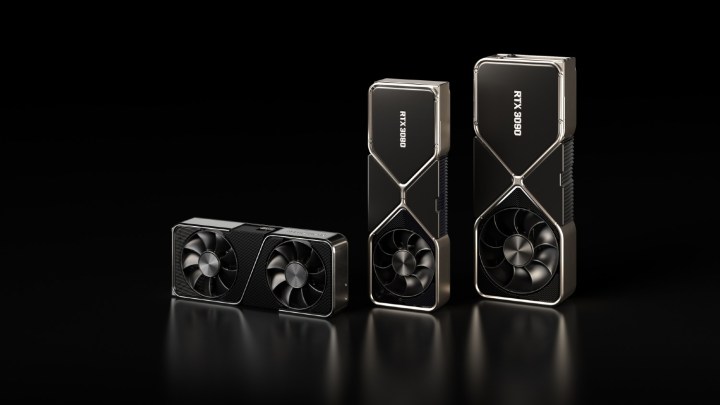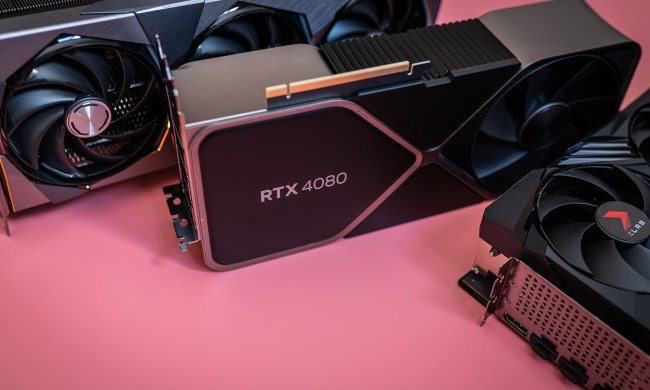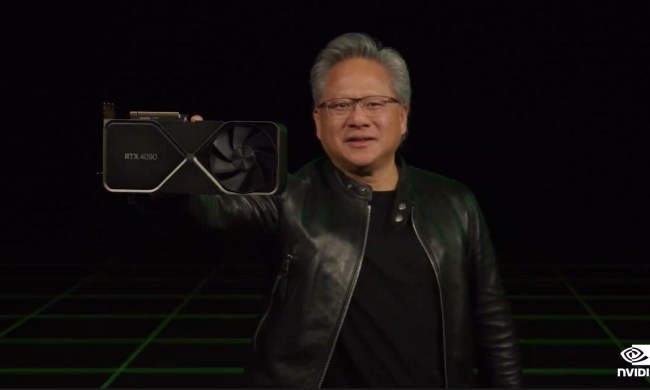Less than 24 hours after Nvidia unveiled its performance chart-topping GeForce RTX 3000 series graphics cards — including the RTX 3070 — a new round of leaks suggest that the GPU maker is already working on an even more powerful midrange refresh. The GeForce RTX 3070 Ti is now tipped to come with even more video memory, which should further boost performance.
The unannounced GeForce RTX 3070 Ti was recently spotted online, according to a report from PC Gamer, and the card was listed in several SKUs of Lenovo’s upcoming Legion T7 gaming systems for Russia that was posted by Videocardz. Lenovo’s listing suggests that the card would have 16GB of GDDR6 video RAM, double what’s available on the non-Ti variant.

The Legion T7 gaming desktops are also listed with Intel Core i7-10700K or i9-10900K processors and up to 32GB of RAM. It’s unclear at this time how accurate Lenovo’s posting is, or if the manufacturer is relying on unverified specifications from partner Nvidia as placeholders for what these systems will actually contain when they ship.
Additionally, Twitter user @_rogame stated that MSI would also make a version of the RTX 3070 Ti with 16GB of memory. At this point, it remains unclear if Nvidia will rely on the “Ti” branding for the card when it launches, or if it will use the new “Super” branding.
Given that Nvidia CEO Jensen Huang previously claimed that the vanilla non-Ti variant of the RTX 3070 already comes with enough performance to topple the current GeForce RTX 2080 Ti on performance, we can expect the RTX 3070 Ti to be a very strong, competitive contender if and when it launches. Aside from using different architectures — the RTX 2000 series was based on Nvidia’s Turing architecture, whereas the RTX 3000 series uses the more modern Ampere architecture — a major difference between the RTX 3070 and the RTX 2080 Ti was memory configuration.
Whereas RTX 2080 Ti shipped with 11GB of RAM, the RTX 3070 only came with 8GB. A Ti version of this midrange card would help it best the prior generation flagship on paper, and upgraded specifications will help Nvidia stay competitive in this segment against upcoming offerings from rival AMD.

For reference, the GeForce RTX 3070 comes with a boost speed of 1,730 MHz and with 5,888 CUDA cores. That card is coming in October and Nvidia is pricing the RTX 3070 at just $499. It’s speculated that the 16GB RTX 3070 Ti would retain the 256-bit memory bus and stick with the slower GDDR6 RAM rather than the faster GDDR6X memory on the RTX 3080 and RTX 3090. The RTX 3080 also jumps to a faster 320-bit memory bus, while the RTX 3090 goes to a 384-bit bus.
If Nvidia does in fact launch the Ti variant, it’s unclear how the company will price the new card. The flagship RTX 3080 was announced at $699, so Nvidia could price the RTX 3070 Ti somewhere between the cost of the RTX 3070 and the RTX 3080, or it could ultimately be priced to replace the RTX 3070 when it launches.



